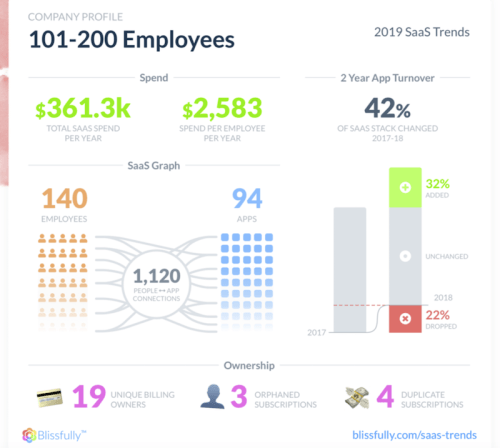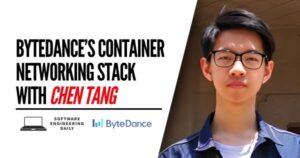monday.com Launches Apps Framework

A “Work OS” uses flexible building blocks to empower organizations to build workflows for any business need. The ability to build high-level, low- or no-code solutions to novel problems without having to engage the services of developers expands the pool of highly productive problem-solvers while allowing developers to focus on core mission-critical development tasks.
In the past, the ability to solve problems with software has been the domain of a specific type of person- the software developer. The software developer has a certain set of skills that allows them to build applications on an operating system for a physical device or the cloud that can make problem-solving easier for themselves or others. Those other members of an organization, such as sales and marketing professionals, benefit from the solutions that developers build, but don’t always have the toolset to solve novel or unique problems they face by building software. What would the business world look like if they could?

A monday.com dashboard
monday.com is a WorkOS that helps over 100,000 teams run their projects, processes, and everyday work. monday.com enables teams to build tailor-made workflow management solutions with a fun-to-use experience and the flexibility to fit any team or industry, it offers millions of ways to run workflows. monday.com was started in 2012 as a project management-focused cloud tool that provided an API and integrations with other software products to enable teams- especially non-coders- to create automated solutions to workflow challenges, such as sharing data between MailChimp, Google Sheets, Salesforce, and other common enterprise software solutions. monday.com provides common building blocks, such as board views, dashboard widgets, integrations, and automations, which users can tie together to create more complex, ready-made solutions to increase productivity and solve problems.

An example of a monday.com automation
The average company with between 200-500 employees subscribes to 123 SaaS vendors, and spends roughly $2884 per employee in fees. Even small companies or sole proprietors may have a dozen or more SaaS subscriptions, and much more work may be performed in custom-made spreadsheets. When consumer-facing apps proliferated in the early generations of smartphones, software such as IFTTT (“If This, Then That) emerged to create custom integrations between services and help users be more productive without manually syncing app data together. In a similar fashion, SaaS products such as Twilio and Stripe used by enterprises often offered APIs, which allowed developers to build internal software which could transfer data back and forth. Software such as Zapier expanded upon this, acting as a “translator between web APIs.” Enterprise software providers and project management software developers started adding in “applets” that would trigger certain functions when internal events occurred- this is now a core feature in services such as Microsoft Dynamics (Flow).

The “missing ingredient” that monday.com seeks to provide is a common platform, and common building language, to tie these resources together and streamline data and communication flows- what diginomica refers to as a “collaborative canvas.” monday.com users employ a common set of tools, working through one streamlined interface, that can access data from across the SaaS landscape in a team. When the SaaS offerings currently available to a user do not satisfactorily solve a novel issue, that user is empowered to create a new solution with monday’s developer tools. In our interview with Eran Zinman, the CTO of monday.com, he gave us several real-world examples of non-technical professionals using monday.com apps and integrations to solve workflow challenges, including some from within monday.com itself. In that instance, a member of monday.com’s sales team took the initiative to develop a custom contact form for monday.com’s website that automatically registered potential customers with either Salesforce or Zendesk depending on company size- and created the entire integration solo, without interrupting the separate work of the development team. Zinman described the moment as “mind-blowing,” as it drove home the creative value of no-code tools in the hands of non-technical team members.
Developer time is a valuable resource for any organization, but the necessary work of maintaining internal administrative software does not always directly contribute to solving user-facing issues that can help that organization grow. monday.com’s value proposition, then, is to provide a platform that does more than help individuals get their daily tasks done, but instead helps transform organizational workflows to ensure a more transparent and responsive way of working. Low-code or no-code apps can empower non-developers to solve problems which may previously have required code. This frees up developers to work on software directly related to the core value stream of the organization, rather than spending time running “data bread lines,” for example.

Much like the value of the smartphone increased as more developers created apps for the platform, the value of a Work OS platform should increase as more building blocks become available. monday.com provides several ways to develop apps. A GraphQL-based API, which predates the new marketplace-based apps, supports read and write access to monday.com elements such as boards and items, and can be used to import or export data from monday.com into other apps. Tools like Zapier can be used to build no-code integrations between different services. Finally, the new Apps Framework provides an entirely new foundation for creating apps on monday.com, by using low-code tools to build monday.com primitive functions into more complex and specifically tailored workflow automations.
The Apps Framework launched last month with 120 apps, including roughly 100 created in the beta release to some of monday.com’s 100,000 business customers, and 20 developed in an internal monday.com hackathon. Apps developed include a Smart Document Reader integration, a connector for Xero and monday.com, and many more. As part of the launch of monday Apps, monday.com is running an open contest called Dream It, Build It, which challenges developers to create apps on the monday.com platform in competition to win a Tesla X, zero-gravity flight, PS5 + VR set, and more. The challenge runs until August 31st.
For more information on monday.com, check out our interview with Eran Zinman, CTO of monday.com. To learn more about the “Dream It, Build It” hackathon, check out the competition post here. For more info on monday.com apps, check out the documentation. Full disclosure: monday.com is a sponsor of Software Engineering Daily.














